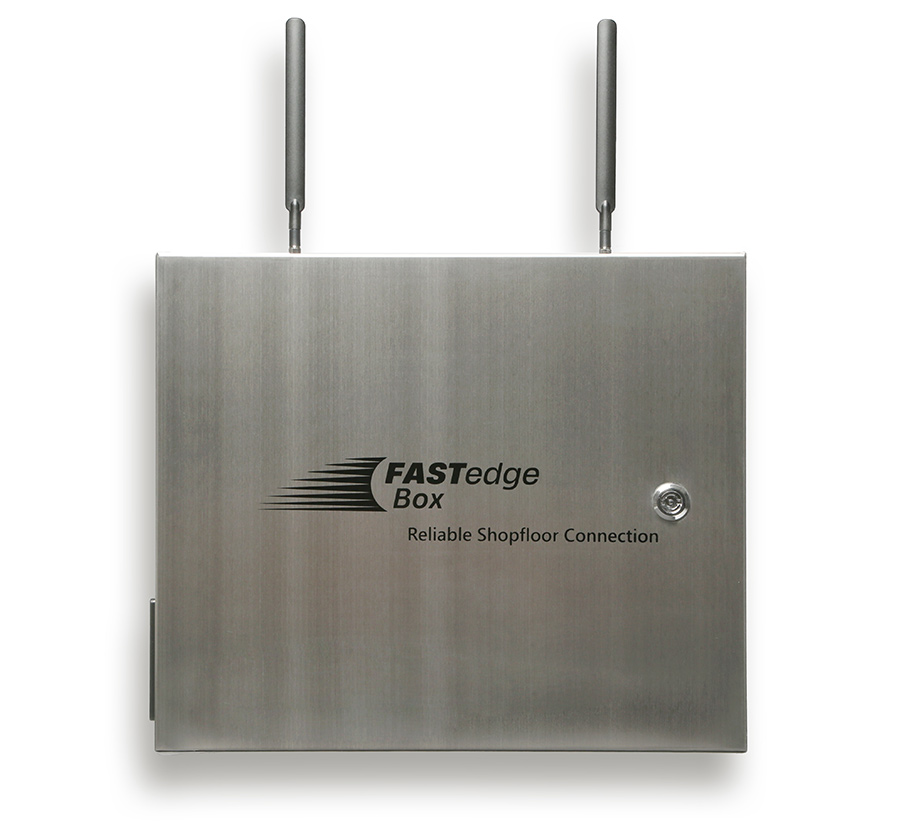Consistent data and key figures have long since become the driving force behind fact-based decisions – from the top management level through the entire organization to the store floor. The data required for this is provided by two systems, Enterprise Resource Planning (ERP) and the Manufacturing Execution System (MES). However, they can only make an effective contribution to the company’s added value if they work closely together. The combination of MODUS ERP and the MES FASTEC 4 PRO from our long-standing partner FASTEC fulfills this requirement. It stands for a convincing, consistent and future-proof ERP industry solution. The seamless exchange of information between the ERP/PPS system and the MES system is of great importance. This is where the tried-and-tested standard interface provides the answer to complex questions: It transfers all relevant data from production orders,bill of materials, routings, quantities, times, etc. This turns an ERP industry solution into a smart complete solution for Industry 4.0.
MODUS Industry – Smart all-in-one Solutions for Plastics and Metal Processing
The ERP solution MODUS Industry, which is 100% geared towards the plastics and metal processing industry, provides a high degree of flexibility, and not just in terms of smart factory aspects. Together with FASTEC, it ensures a continuous flow of communication between machines, people and business processes. While the plant manager often monitors the machines and production lines purely from a malfunction perspective, the associated order and the consequences for deadlines and costs can be directly linked in the ERP. This includes individually defining process criteria that deviate from the installed MES, for example:
- Order lead times and delivery reliability
- Calculation triggers
- Workflows via downstream processes and multi-level escalation management
- Planning of maintenance
MODUS Industry is based on the world’s leading ERP system for SMEs, Microsoft Dynamics 365 Business Central, and has been awarded the highest Microsoft certification and quality standard, i.e. Certified for Microsoft Dynamics (CfMD). It ensures a continuous flow of information from the customer order to the Production order and purchase requisitions. Intelligent modules such as business intelligence, data analytics in purchasing and sales allow predictions to be made about future developments. The resources managed in the ERP can thus be planned precisely in line with market requirements and capacity utilization can be increased. The actual availability data flows directly into the planning process.
The FASTEC 4 PRO system integrates interfaces that have already been tried and tested in practice. With over 20 years of expertise, the bundle of preconfigured industry solutions reduces the implementation effort so that the system can quickly go into operation.
OPC UA, XML and web services are standard technologies of the integrated mapping tool, which turns manufacturing into intelligent manufacturing and productive manufacturing into highly productive manufacturing.
In the future, HoloLens, for example, will enable more efficient maintenance and, even more importantly, location-independent service assistance and faster diagnosis and troubleshooting in the event of a fault. System documentation or support videos can be accessed via the smart glasses.
MODUS FOODVISION – Holistic Overview of the Supply Chain
The FOODVISION industry solution for the food industry is equally capable of optimizing batch-oriented production in conjunction with FASTEC 4 PRO.
In addition, the documentation and information requirements in the food industry have increased significantly. MES and ERP must go hand in hand here. Until now, it was sufficient to say that raw material batch 1 from the supplier flowed into batch A from the manufacturer, which went to X recipient. With the new consumer portals, however, the food retail trade (LEH) requires more extensive data about the batches. Batch-specific data includes, for example, the origin of the goods and the raw materials (born, reared, slaughtered, processed) or, if applicable, ingredient information. Where possible, redundant data should not be created, but existing information should be accessed. With the consumer portal, e.g. via Mynetfair, the end packer must ultimately provide all supply chain information.
Changes in state during the processing process must be given special consideration. The freezing of fresh raw goods from the supplier for later use regularly leads to irritation. The best-before date provided (electronically) by the supplier must be overridden by a best-before date specified by the processing company. A further processing step is added to the information chain. A simple process may therefore lead to the food retailer and the consumer gaining very deep insights into my value-added structure. The company can take appropriate precautions here by selecting the batch determination and allocation processes. However, this can only happen in terms of batch traceability if MES and ERP process the data in a coordinated manner, as is the case between MODUS FOODVISION and FASTEC 4 PRO.
Guest article by Wernher von Schrader, Head of Marketing at MODUS Consult AG








